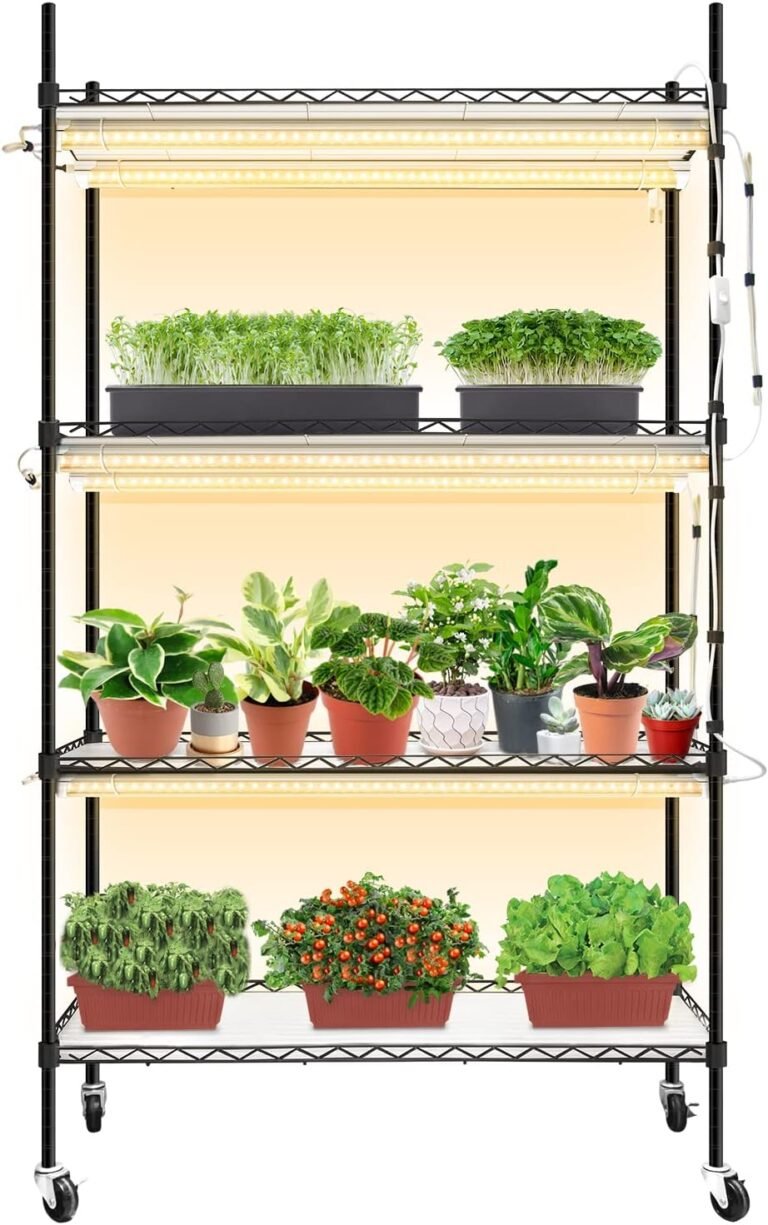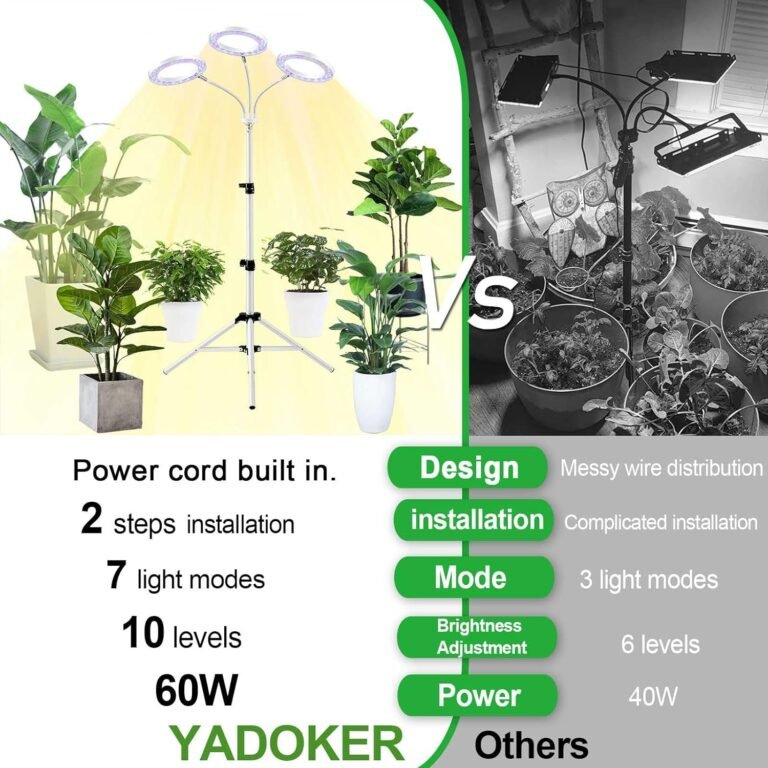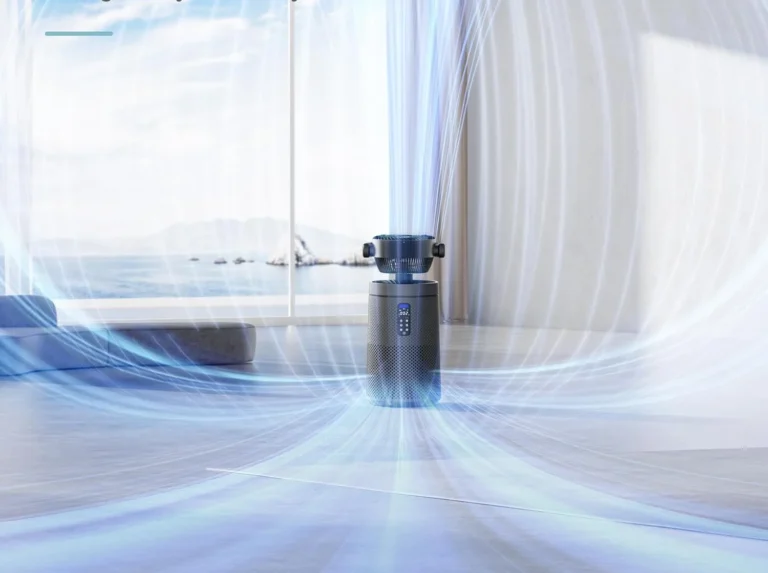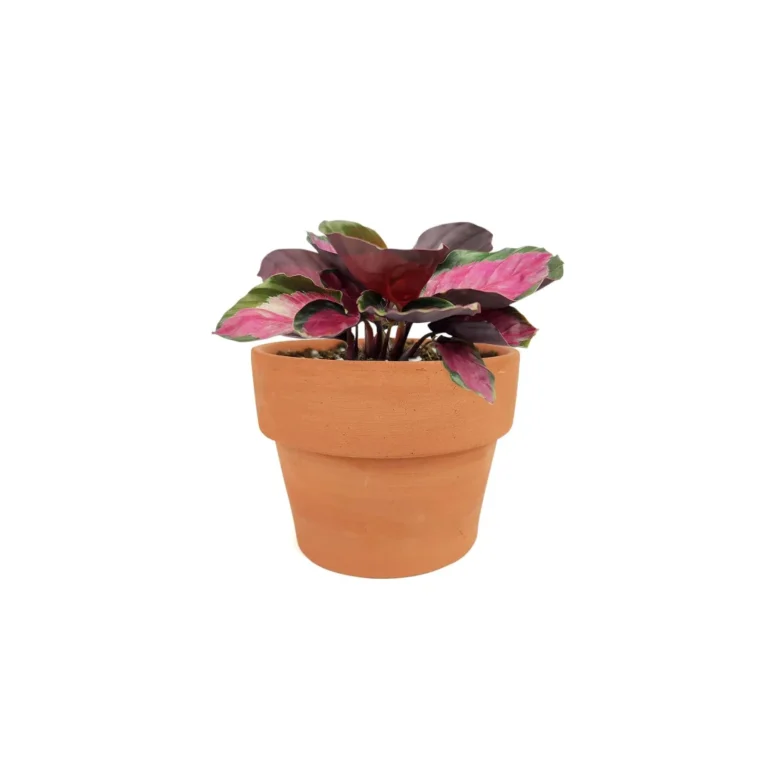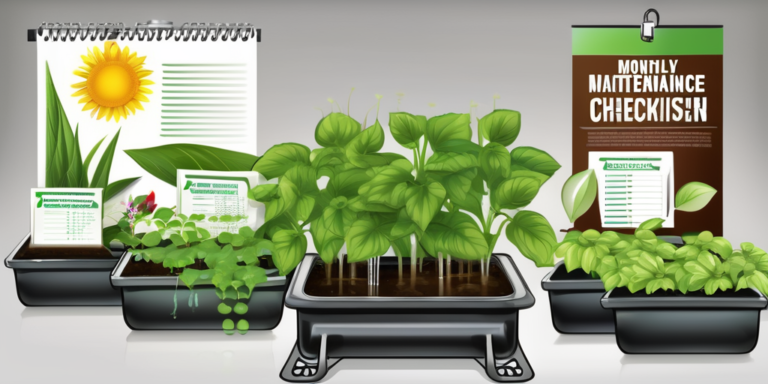Are you tired of traditional gardening methods that require constant attention, excessive water usage, and harmful chemicals? If so, it’s time to explore the world of aquaponics gardening. In this blog post, we’ll take you on a journey into the fascinating realm of aquaponics, where fish and plants work together to create a harmonious and sustainable ecosystem. By the end of this article, you’ll be ready to transform your gardening experience and embark on your own aquaponic gardening adventure!
The Basics of Aquaponics Garden
What is Aquaponics?
Aquaponics is a revolutionary agricultural technique that combines aquaculture (raising fish) with hydroponics (growing plants in water without soil). This ingenious system leverages the natural symbiotic relationship between fish, plants, and beneficial bacteria to create a closed-loop ecosystem where waste becomes a valuable resource.
The Fish Tank: Heart of the System
At the core of any aquaponics garden is a fish tank. This is where your fish species of choice reside. As the fish feed and grow, they produce fish waste, primarily in the form of ammonia. This waste-rich water is a critical component in nourishing your plants.

Aquaponic Systems
Aquaponic systems come in various shapes and sizes, but they all share a common goal – facilitating the exchange of nutrients between fish and plants. In these systems, water from the fish tank is circulated into plant beds, providing essential nutrients for plant growth. In turn, the plants filter the water, removing excess nutrients and purifying it for the fish.
The Magic Behind Aquaponics
Beneficial Bacteria: Nature’s Cleanup Crew
Key to the success of aquaponics are the beneficial bacteria that inhabit the growing medium and convert ammonia (from fish waste) into nitrite and then into nitrate. These nitrates serve as a nutrient-rich water source for your plants, creating a perfect cycle of sustainability.
Controlled Environment and Plant Growth
Unlike traditional gardening, aquaponics allows for year-round growth in a controlled environment. With the right setup, you can enjoy fresh produce, such as herbs, vegetables, and even fruit, regardless of the weather outside. This controlled environment is enhanced by artificial lighting, mimicking natural light conditions for your plants.
Environmental Benefits Galore
Aquaponics gardening isn’t just about growing food; it’s about doing so sustainably. By recycling water and using natural processes, aquaponics drastically reduces water usage and eliminates the need for harmful chemicals that are common in traditional farming. Plus, it promotes local food production, reducing the carbon footprint associated with transportation.
Aquaponics vs. Hydroponics: The Main Difference
While aquaponics and hydroponics share similarities, the main difference lies in their nutrient source. Hydroponic systems rely on synthetic nutrient solutions, whereas aquaponics uses fish waste and beneficial bacteria to create nutrient-rich water. This natural approach not only reduces operating costs but also leads to healthier, more organic food production.
Exploring the Advantages of Aquaponics
1. Lower Operating Costs: Once your aquaponics system is up and running, the ongoing costs are relatively low, especially compared to traditional gardening methods.
2. Sustainable Water Usage: Aquaponics uses a fraction of the water needed for traditional soil-based gardening, making it an environmentally responsible choice.
3. Space-Efficient: Aquaponics systems can be designed to fit in small spaces, making them suitable for urban environments.
4. Year-Round Growth: With controlled environments and artificial lighting, you can enjoy fresh produce year-round.
5. Reduced Environmental Impact: By eliminating the use of harmful chemicals and reducing transportation distances, aquaponics positively impacts the environment.
The Disadvantages of Aquaponics
While aquaponics offers numerous benefits, it’s essential to be aware of potential drawbacks as well. Here are five disadvantages of aquaponics:
1. Initial Setup Costs: Building an aquaponic system can require a significant investment in materials and equipment.
2. Learning Curve: Aquaponics involves a learning curve, particularly if you’re new to fishkeeping or hydroponic gardening.
3. Fish Care: Maintaining fish health can be challenging, as they are sensitive to water quality and temperature fluctuations.
4. Energy Requirements: Operating pumps, heaters, and artificial lighting can increase your energy consumption.
5. Additional Maintenance: Aquaponic systems require ongoing monitoring and maintenance to ensure the health of both fish and plants.
Despite these challenges, the benefits of aquaponics far outweigh the drawbacks for many enthusiasts.
Starting Your Aquaponic Journey
Now that you’re intrigued by the concept of aquaponics, it’s time to roll up your sleeves and get started on your own self-sustaining ecosystem. In this section, we’ll guide you through the essential steps to kickstart your aquaponic garden.
Selecting the Right Fish Species
The first step in setting up an aquaponics system is choosing the right fish species. Some popular choices for aquaponics include tilapia, trout, catfish, and koi. Consider factors like the local climate, water temperature, and your personal preferences when making your selection.
Building Your Aquaponic System
Aquaponic systems come in various configurations, but the most common types are media bed, nutrient film technique (NFT), and deep water culture (DWC). Media beds use a growing medium like gravel or clay pebbles to support plant roots. NFT systems provide a thin film of nutrient-rich water over plant roots, and DWC systems immerse plant roots directly into the water.
The system’s size and complexity can vary, from small backyard setups to larger commercial operations. Your choice should align with your goals and available space.
Setting Up the Fish Tank
Your fish tank should be appropriately sized to accommodate your chosen fish species and provide adequate space for growth. Ensure good water quality by regularly checking parameters like pH levels, ammonia, and nitrite levels in fish tanks. An air pump can help oxygenate the water, creating a healthier environment for the fish.
Building Grow Beds
In media bed systems, construct grow beds above or beside the fish tank. These beds are filled with a growing medium and planted with the crops of your choice. Plant roots extend into the nutrient-rich water, absorbing essential nutrients and purifying the water for the fish.
Introducing Fish and Plants
With your aquaponic system in place, it’s time to introduce your fish and plants. Start with a small number of fish and vegetables, to allow the system to establish itself and avoid overwhelming it. As the system matures, you can gradually increase the fish population.
Plant a variety of vegetables and herbs suited to your local climate and personal preferences. Popular choices include lettuce, tomatoes, basil, and mint. Remember to regularly check the system for any signs of stress in your fish or plants.
What Can You Grow with Aquaponics?
One of the most appealing aspects of aquaponics is its versatility. You can grow a wide variety of crops, including:
– Leafy greens like lettuce and spinach
– Herbs such as basil, cilantro, and parsley
– Tomatoes, cucumbers, and peppers
– Strawberries, blueberries, and other small fruits
The possibilities are nearly endless, limited only by your local climate and system size.
Nurturing Your Aquaponic Ecosystem
Congratulations on setting up your aquaponics system! As your garden begins to flourish, it’s crucial to understand the ongoing care and maintenance required to keep your ecosystem thriving. In this section, we’ll explore the key aspects of nurturing your aquaponic garden.
Monitoring Water Quality
Water quality is the lifeblood of your aquaponic system. Regularly check water parameters, like pH levels, ammonia, nitrite, and nitrate levels to ensure they are within the appropriate range for both fish and plants. Invest in quality testing kits to make this task easier.
Feeding Your Fish
Proper fish nutrition is essential for their health and the success of your system. Select a high-quality fish feed appropriate for the species you’ve chosen. Be mindful not to overfeed, as excess uneaten food can lead to water quality issues.
Managing Nutrient Levels
Maintaining balanced nutrient levels is critical. As your system matures, you may need to supplement with additional nutrients, especially if you notice nutrient deficiencies in your plants. Keep an eye on the nutrient levels in your system to ensure optimal plant growth.
Pruning and Harvesting
Regularly prune and harvest your plants to encourage healthy growth. Removing dead or decaying leaves and fruit helps prevent nutrient imbalances in the water. Harvesting your crops as they mature ensures a continuous supply of fresh produce.
Pest and Disease Control
While aquaponics is generally less susceptible to pests and diseases than traditional gardening, it’s still essential to remain vigilant. Keep an eye out for any signs of trouble, and if issues arise, consider introducing natural predators or organic remedies to maintain a healthy balance.
The Energy Requirements of Aquaponics
Aquaponic systems rely on various components like water pumps, air pumps, and artificial lighting to function efficiently. These components may increase your energy consumption compared to traditional gardening. However, some enthusiasts opt for renewable energy sources, such as solar panels, to reduce their environmental impact.
Growing Mediums and Grow Beds
The choice of growing medium for your aquaponics system depends on the type of system you’ve set up. In media bed systems, common growing mediums include gravel, clay pebbles, or even coconut coir. In nutrient film technique (NFT) and deep water culture (DWC) systems, no additional growing medium is needed as the plants’ roots are submerged directly in water.
Water Pump Maintenance
The water pump is a crucial component in your aquaponics system, responsible for circulating water from the fish tank to the plant beds. Regularly inspect and clean the pump to ensure it operates smoothly. Any issues with the system clean water pump can disrupt the entire ecosystem.
Sustainable Practices
Aquaponics offers several sustainable practices that can enhance your system’s efficiency. Consider using recycled materials for your system components, such as grow beds and containers. Additionally, focus on minimizing waste and conserving water wherever possible.
Exploring Aquaponics Year-Round
One of the most appealing aspects of aquaponics is the potential for year-round growth. With the right setup and control over environmental conditions, you can enjoy fresh produce no matter the season. This opens up a world of possibilities for growing a wide variety of crops.
Recycling Materials
Consider using recycled or repurposed materials for your aquaponic setup. This not only reduces costs but also aligns with the sustainable ethos of aquaponics. From containers to grow beds, there are plenty of creative ways to give new life to old items.
Environmental Benefits of Aquaponics
Aquaponics isn’t just about growing food; it’s a sustainable farming method that offers a host of environmental benefits. In this section, we’ll explore how aquaponics positively impacts the environment and promotes local food production.
Reduced Water Usage
One of the most significant environmental advantages of aquaponics is its reduced water usage compared to traditional gardening. The closed-loop system recirculates water continuously, drastically cutting down on the amount needed for plant growth. This efficiency is particularly valuable in regions prone to drought or water scarcity.
Elimination of Harmful Chemicals
Traditional agriculture often relies on synthetic fertilizers and pesticides, which can harm the environment and human health. Aquaponics eliminates the need for these chemicals, as the system’s natural processes provide all the necessary nutrients for plant growth. This reduction in harmful chemical use benefits both your garden and the planet.
Local Food Production
Aquaponics supports local food production by enabling year-round cultivation in controlled environments. This reduces the need to transport produce over long distances, cutting down on carbon emissions associated with food transportation. Local food production also fosters a stronger connection between consumers and growers.
Controlled Environment
Aquaponics allows for precise control over environmental conditions, including temperature, humidity, and light. This control minimizes the risk of crop loss due to extreme weather events, pests, or diseases. It also reduces the need for synthetic chemicals and pesticides, contributing to a healthier and more sustainable ecosystem.
Artificial Lighting and Natural Light
In aquaponics, artificial lighting is used to supplement natural light, ensuring plants receive adequate illumination for photosynthesis. LED grow lights are energy-efficient options that mimic the sun’s spectrum. Combining artificial and natural light allows for consistent, year-round plant growth.
Managing Costs and Optimizing Efficiency
As you continue your aquaponics journey, it’s essential to understand the financial aspects of maintaining your system and optimizing its efficiency. In this section, we’ll explore operating costs, water usage, and ways to ensure your aquaponics garden remains sustainable and economical.
Operating Costs
While aquaponics can be cost-effective in the long run, it’s important to consider the initial setup costs, which can be substantial. These costs include materials, equipment, infrastructure, and ongoing expenses like fish feed and energy bills. However, once your system is established, operating costs tend to be lower compared to traditional gardening methods.
Water Usage
Aquaponics is known for its efficient water usage. The closed-loop system recirculates water continuously, significantly reducing water consumption compared to conventional gardening. Water losses occur primarily through evaporation and transpiration by the plants. Regularly topping up the system to compensate for these losses is generally the only water-related task.
Energy Consumption
Aquaponic systems do require energy to run various components, such as water pumps, air pumps, and artificial lighting. While this can increase your energy bills, you can mitigate these costs by using energy-efficient equipment and, if possible, renewable energy sources like solar panels.
Start-Up Costs
Starting an aquaponics garden can be financially challenging due to the initial investment required. You’ll need to purchase materials for the system, fish, plants, and necessary equipment. However, consider this a long-term investment, as the system’s sustainable nature can lead to cost savings over time.
Additional Costs
Beyond the start-up expenses, there may be additional costs associated with maintaining your aquaponics system. These include fish feed, replacement components, and any upgrades or expansions you may undertake. Regular maintenance and monitoring can also incur ongoing costs.
Aquaponics: A Sustainable Choice
While aquaponics comes with costs and challenges, it offers a wealth of benefits that make it a sustainable choice for home gardeners and commercial farmers alike. By embracing this innovative farming method, you can enjoy fresh produce year-round, conserve water, reduce the need for harmful chemicals, and contribute to local food production.
Frequently Asked Questions (FAQs)
What is Aquaponics Gardening?
Aquaponics gardening is a sustainable farming method that combines aquaculture (raising fish) with hydroponics (growing plants in water without soil). It creates a closed-loop ecosystem where fish and plants work together to support each other’s growth.
How Do You Start an Aquaponic Garden?
To start an aquaponic garden, follow these steps:
1. Select the right fish species based on your climate and preferences.
2. Build your aquaponic system, choosing a type that suits your goals and available space.
3. Set up the fish tank with appropriate equipment for water quality management.
4. Create grow beds with a suitable growing medium.
5. Introduce fish and plants to your system, starting with a small population.
6. Monitor water quality, feed your fish, and maintain nutrient levels.
7. Prune and harvest your plants regularly.
8. Address any pest or disease issues promptly.
9. Explore sustainable practices to reduce environmental impact.
What Crops Can You Grow with Aquaponics?
Aquaponics allows you to grow a wide variety of crops, including leafy greens, herbs, tomatoes, cucumbers, peppers, and small fruits like strawberries and blueberries. The choice of crops depends on your local climate and system size.
Can You Use a Fish Tank for Hydroponics?
Yes, you can repurpose a fish tank for hydroponics by modifying the system to deliver synthetic nutrient solutions to the plants instead of relying on fish waste and beneficial bacteria. However, it’s essential to make the necessary adjustments and provide suitable equipment for hydroponic cultivation.
With your aquaponic garden flourishing and a solid understanding of the costs and benefits, you’re well-prepared to continue your sustainable gardening journey. Ready to transform your gardening experience? Dive into the world of sustainable farming with our latest blog on aquaponics gardens! Discover the perfect harmony between fish and plants, and learn how you can create your own self-sustaining ecosystem.


